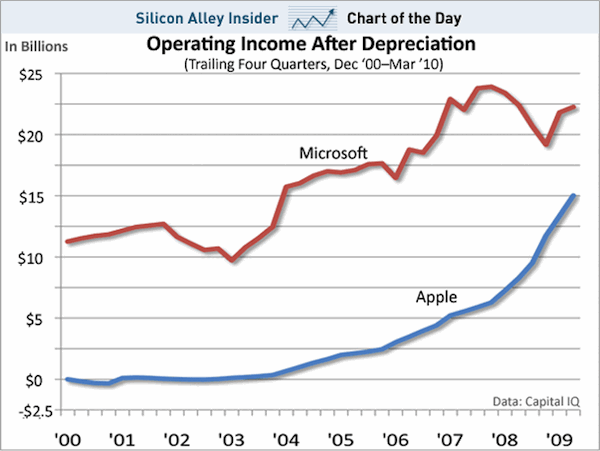By Joe Wilcox, Betanews
Well, hell, it must be "five reasons" day here at Betanews, and I certainly didn't plan it that way. Earlier I posted "Five reasons why Apple will deliver iPhone 4 preorders early." Now it's Microsoft's "five reasons." I had planned to post this one yesterday but held back because of Apple's iOS 4 release, which gravity well pulled away tech readers' attention (surely the many blog posts or news stories made the update hard to ignore).
I completed the main contents of this post yesterday morning (Hey, I don't have an iPhone on which to test iOS 4) as a follow-up to Friday's "I have lost confidence in Steve Ballmer's leadership." I see that some pundits are taking swings at Microsoft. Yesterday, Henry Blodget asked: "Can Microsoft collapse?" My response: Why ask? This is a $60-billion revenue a year company. RealNetwork's founder Rob Glaser answers thequestion: "Why has Microsoft seemingly stopped innovating?" Considering Real's lack of innovation for most of the Noughties, Glaser is perhaps a good person to answer that question.
Microsoft's problems are strategic and structural. The company is by no means near collapse. It's master of two very profitable monopolies. The doomsayers should take their end-of-the-world rhetoric elsewhere.
My goal here is to identify problems so that maybe, just maybe, they can be solved. You can't solve a problem you haven't identified as being one. With that introduction, here are the five reasons why Microsoft struggles to compete outside its established businesses, offered in no order of importance:
1. U.S. and European antitrust cases put lawyers and non-technologists in charge of important final product decisions. I've heard Microsoft employees complain that the ratio of lawyers to regular staff is one-to-one. Of course, they exaggerate -- or I sure hope so -- but their frustrations make a point: Government oversight has changed how Microsoft competes. The company isn't as lithe or aggressive, particularly following the November 2002 judicial decision that made the U.S.-Microsoft settlement agreement the antitrust remedy.
That's not to say Microsoft acquiesced easily. The company long resisted releasing pertinent interoperability information in the United States. On the European Continent, this resistance led to huge fines. Meanwhile, Microsoft steered away from exclusive contracts and from pushing into adjacent markets. Both tactics could have helped Microsoft open up the mobile market, for example.
Additionally, Microsoft curtailed development of the so-called middleware at the core of the U.S. case: E-mail, instant messaging, media playback and Web browsing:
- Outlook Express stagnated after Windows XP's release, although Microsoft pushed ahead with development of Outlook, which wasn't part of the case. Microsoft eventually removed e-mail from Windows, making the application separately available.
- Instant messaging development continued but the real advancements came after Microsoft removed the feature from Windows.
- Windows Media Player 12 isn't much different from the version shipping with Windows XP in 2001. Meanwhile, Apple came to dominate media playback through iPod and iTunes.
- All major browser development stopped with Internet Explorer 6. Only after Firefox's late-2004 release did Microsoft resume IE development. Meanwhile paid search gave competitors reasons to invest in Web browsers. IE usage share dropped from about 95 percent in 2004 to, according to Net Applications, around 63 percent in May.
There arguably is plenty of competition today in the so-called middleware categories targeted by U.S. trustbusters. Would it have been otherwise, particularly without the European compelling Microsoft to remove the media player from Windows or to offer a browser ballot screen? Unlikely.
2. Microsoft lost control of file formats. Microsoft cofounder Bill Gates learned several important lessons from IBM. Among them: The value of controlling key technology endpoints. For IBM, it was control interfaces. For Microsoft: Computing standards and file formats. Microsoft worked with clone makers and developers to establish Windows as the de facto standard for IBM-compatible PCs. Meanwhile, Charles Simonyi, the father of Microsoft, and his team achieved two important goals by the mid 1990s:
- Established format standards that resolved problems sharing documents created by disparate products.
- Ensured that Microsoft file formats would become the adopted desktop productivity standards.
Format lock-in helped drive Office sales throughout the late 1990s and early 2000s -- and Windows along with it. However, the Web emerged as a potent threat, which Gates warned about in his May 1995 "Internet Tidal Wave" memo. Gates specifically identified HTML, HTTP and TCP/IP as formats outside Microsoft's control. "Browsing the Web, you find almost no Microsoft file formats," Gates wrote. He observed not seeing a single Microsoft file format "after 10 hours of browsing," but plenty of Apple QuickTime videos and Adobe PDF documents. He warned that "the Internet is the most important single development to come along since the IBM PC was introduced in 1981. It is even more important than the arrival of the graphical user interface (GUI)."
In the memo, Gates clearly outlined a strategy for fighting back the Internet. But the company charted a different course. In the early 2000s, Microsoft made interoperability a bigger priority. While there are several reasons for the change in emphasis, three stand out:
- Antitrust enforcers demanded that Microsoft disclose more protocol information, in 2001 (as part of the US settlement) and in 2004 (as required by European regulators).
- More governments demanded that suppliers provide open or interoperable software. Microsoft sought to keep existing government customers and to build better relationships with those who could support anti-piracy initiatives.
- Customers demanded that Microsoft make its software more interoperable with their legacy systems.
By the mid 2000s, Microsoft couldn't say enough about its interoperability efforts, which loosened standards and file formats from its tight control.
3. Microsoft's senior leadership is middle-aging. Older folks with families and kids don't have the same priorities as younger employees -- and they're not as hungry workaholics. Not that there is any feast to dine on, given Microsoft's decade of stagnate share prices. Current employees have little work-hard incentive for stock-based compensation.
The average Microsoft employee is 38 years old, according to the company's self-published corporate data. Only 15.9 percent of employees are under 30. By comparison, Google employees' average age is somewhere under 30. The company doesn't publicly release average age, presumably because of an age-discrimination lawsuit. According to the last publicly available data, less than 2 percent of Googlers were over 40. For Microsoft: 40.7 percent.
Google resembles Microsoft in the 1980s and 1990s:
- Google is a growth company that is still adding new customers.
- Most employees are young, fresh from college and have fewer family obligations and other distractions from work.
- The corporate culture encourages employees to work long hours and provides services that support the work ethic.
- Googlers can quickly advance up the management chain, and they can look forward to healthy compensation-for-results rewards.
- The most innovative thinkers are at the top of the decision-making tree rather than being at the bottom (under much older managers).
Now compare to Microsoft employees, which being older have more outside-company commitments. Most of Microsoft's senior management team is 40 or much older. The average age of the eight most-senior executives, including CEO, COO, Chief Software Architect and five divisional presidents, is around 48 years; that's younger than I expected. There is age in wisdom, surely. But the wise are sometimes too cautious (see #5).
4. Microsoft's middle-management structure is too large. Microsoft employs a little more than 88,000 people, down from 92,736 on June 30, 2009. Microsoft employed 31,575 people on June 30, 1999. The large increase in employees also added many layers of middle management. According to various former, and even some current, Microsoft employees, their number of "reports" -- meaning people they report to -- increased by five to seven managers above them during the last decade.
Such lofty management structure stifles innovation, because:
- There are too many cooks in the kitchen, so to speak. Former and existing Microsoft employees report spending hours in needless meetings; there is too much design by committee.
- Good ideas don't flow easily up the decision tree. They get bogged down in the layers for many reasons, which can be motivational -- such as managers seeking to protect their hierarchies or jobs.
- Employees aren't rewarded enough for their hard work or for good ideas. Either the management structure holds them back, or they can't advance fast enough to new positions of responsibility.
CEO Steve Ballmer's September 2005 Microsoft reorganization added to the stiff management structure by creating new layers -- at first three and later five divisional presidents. For three divisions, the changes worked out reasonably well from broader profit-and-loss and sales perspectives, but innovation stagnated.
5. Microsoft's corporate culture is risk adverse. The company that once took daring risks is too cautious. It's a mental illness seen before among innovators that grew rapidly to dominate a market only to later stall as they struggled to maintain existing revenue streams. Risk aversion is typically greatest when a disruptive technology threatens a mature base of customers and healthy revenue streams. IBM's risk aversion increased during the 1980s and 1990s as the PC disrupted its mainframe business. Microsoft's problems started with the World Wide Web and continue with mobile devices connected to cloud services.
Microsoft was nimbler during the transition from mainframe to PC dominance. IBM had built up massive corporate infrastructure, large customer base and revenue streams attached to both. With few customers, Microsoft had little to lose but much to gain; the upstart took risks IBM wouldn't for fear of losing customers or jeopardizing existing revenue streams. Microsoft's role is similar today. Two product lines, Office and Windows, account for the majority of Microsoft products, and the majority of sales are to enterprises -- the same kind of customers IBM had during the mainframe era.
Nimbler upstarts, Google among them, are competing to get the customers Microsoft has already got. Rather than take innovative risks, Microsoft has chosen to protect its existing customer base and revenue streams. As such, Microsoft's attention is hugely focused on preserving its enterprise Office-Windows-Windows Server applications stack. Meanwhile, innovators push compelling disruptive mobile-to-cloud service technologies where Microsoft either doesn't compete or has failed to successfully. Microsoft's risk aversion will be its undoing.
Copyright Betanews, Inc. 2010










 Microsoft
Microsoft -
Apple -
iPhone -
IBM -
Windows XP














 Two major Linux-based mobile operating system efforts, Nokia's Maemo and Intel's Moblin were
Two major Linux-based mobile operating system efforts, Nokia's Maemo and Intel's Moblin were 
 This month, Amazon, Barnes and Noble, and Borders have been engaged in some serious e-reader competition. Following the introduction of Borders' bargain-priced Kobo e-paper reader, both Barnes and Noble and Amazon cut the prices of their Nook and Kindle products to put all three products on a level playing field. All three book retailers have been pushing their cross-platform software readers too, jockeying for superiority in the e-book trade.
This month, Amazon, Barnes and Noble, and Borders have been engaged in some serious e-reader competition. Following the introduction of Borders' bargain-priced Kobo e-paper reader, both Barnes and Noble and Amazon cut the prices of their Nook and Kindle products to put all three products on a level playing field. All three book retailers have been pushing their cross-platform software readers too, jockeying for superiority in the e-book trade. True to last week's rumors, Hulu today unveiled a new subscription tier called Hulu Plus which allows users access to Hulu across a broader spectrum of devices, not just limiting consumption to PC screens.
True to last week's rumors, Hulu today unveiled a new subscription tier called Hulu Plus which allows users access to Hulu across a broader spectrum of devices, not just limiting consumption to PC screens.
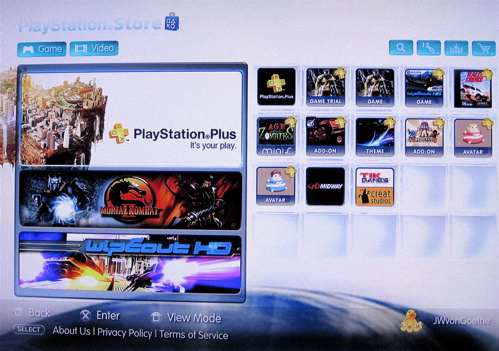
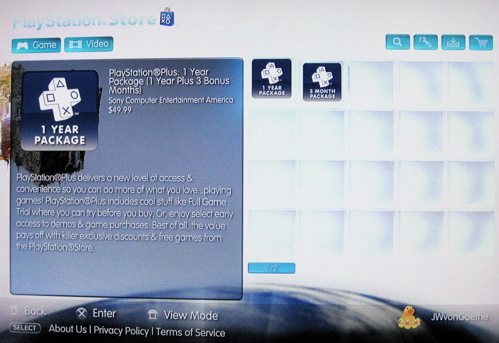







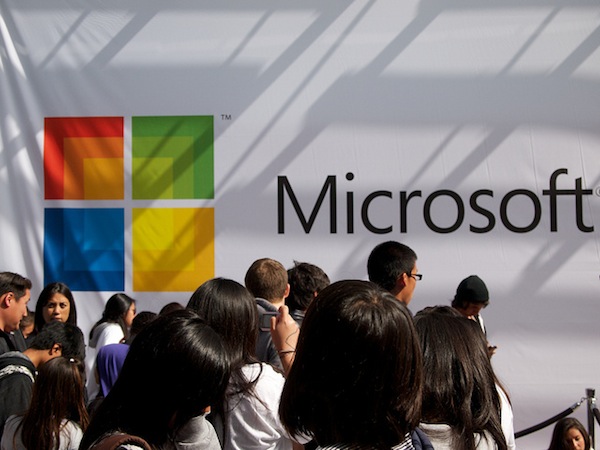 People wait for the opening of the fourth Microsoft Store in San Diego
People wait for the opening of the fourth Microsoft Store in San Diego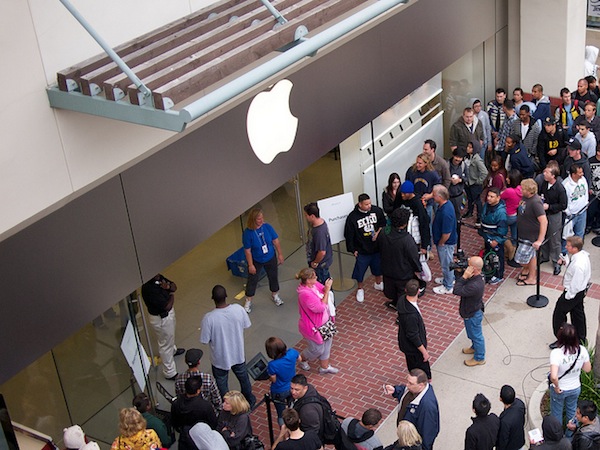 The iPhone 4 launch drew thousands of people to Apple Store Fashion Valley
The iPhone 4 launch drew thousands of people to Apple Store Fashion Valley Thousands of people swarm San Diego's Fashion Valley Mall Apple Store for iPhone 4
Thousands of people swarm San Diego's Fashion Valley Mall Apple Store for iPhone 4 The line waiting for the Microsoft Store grand opening was much smaller, but still sizable
The line waiting for the Microsoft Store grand opening was much smaller, but still sizable Teens not geeks lined up outside Microsoft Store, for concert tix and other goodies
Teens not geeks lined up outside Microsoft Store, for concert tix and other goodies Apple shoppers came to spend money on iPhone 4, not get freebees.
Apple shoppers came to spend money on iPhone 4, not get freebees. News Corp-owned subsidiary Fox Mobile Group launched late Wednesday its fee-based Bitbop mobile entertainment service, aiming to compete with the likes of
News Corp-owned subsidiary Fox Mobile Group launched late Wednesday its fee-based Bitbop mobile entertainment service, aiming to compete with the likes of  The ability to record 720p HD video has become a standard feature in the big flagship smartphones this year. The Google Nexus One, Apple iPhone 4, Motorola Droid X, HTC EVO 4G, and Nokia N8, for example, can all capture HD video.
The ability to record 720p HD video has become a standard feature in the big flagship smartphones this year. The Google Nexus One, Apple iPhone 4, Motorola Droid X, HTC EVO 4G, and Nokia N8, for example, can all capture HD video. American consumer electronics company
American consumer electronics company 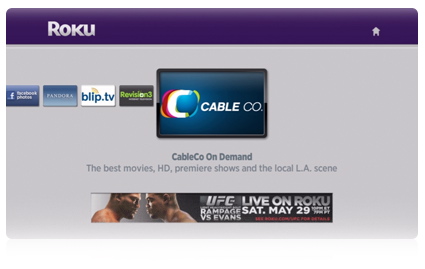



 The Android community was looking forward to today like it was Christmas, and Verizon and Motorola delivered exactly what the community was expecting: the "sequel" to the popular Motorola Droid, the Droid X.
The Android community was looking forward to today like it was Christmas, and Verizon and Motorola delivered exactly what the community was expecting: the "sequel" to the popular Motorola Droid, the Droid X.  In a statement to the press this afternoon, national wireless carrier AT&T outlined the different ways that customers will be able to get the first batch of the new Apple iPhone 4.
In a statement to the press this afternoon, national wireless carrier AT&T outlined the different ways that customers will be able to get the first batch of the new Apple iPhone 4. No sooner does Barnes and Noble
No sooner does Barnes and Noble 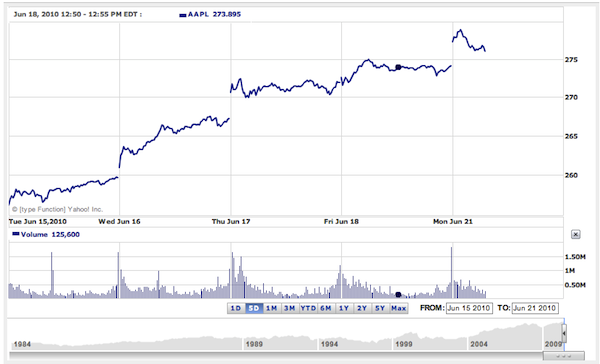












 Mobile phone leader Nokia today
Mobile phone leader Nokia today  X8 Highlights
X8 Highlights



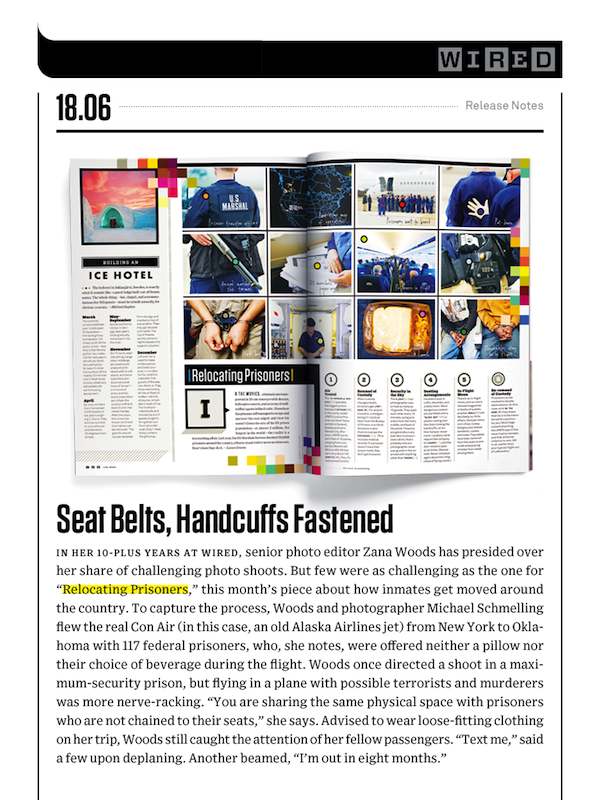


 AT&T was the last of the "big four" U.S. mobile operators to start selling phones based on Google's Android operating system, and has only had a single Android phone available
AT&T was the last of the "big four" U.S. mobile operators to start selling phones based on Google's Android operating system, and has only had a single Android phone available  Even before the doors of the Electronic Entertainment Expo got to open, the name of Microsoft's Xbox 360 motion controller has been revealed. Formerly known by its project name, Natal, Microsoft's camera-based motion controller will be known as Kinect when it comes to market later this year.
Even before the doors of the Electronic Entertainment Expo got to open, the name of Microsoft's Xbox 360 motion controller has been revealed. Formerly known by its project name, Natal, Microsoft's camera-based motion controller will be known as Kinect when it comes to market later this year.


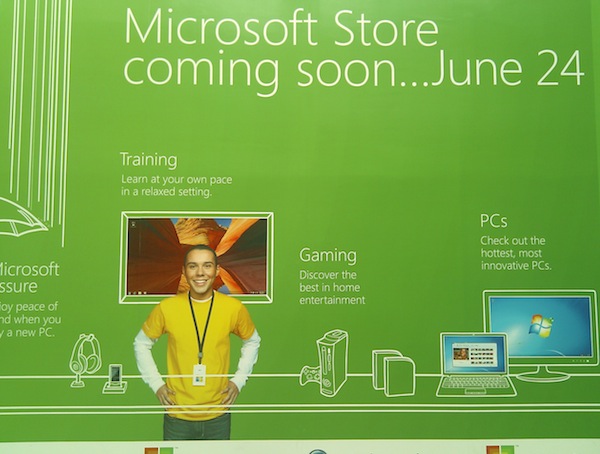
 Approximate locations -- Apple Store in "E" and Microsoft Store in "D"
Approximate locations -- Apple Store in "E" and Microsoft Store in "D" 6. Front Camera and Video Conferencing
6. Front Camera and Video Conferencing
 Chrome HTML5 test results
Chrome HTML5 test results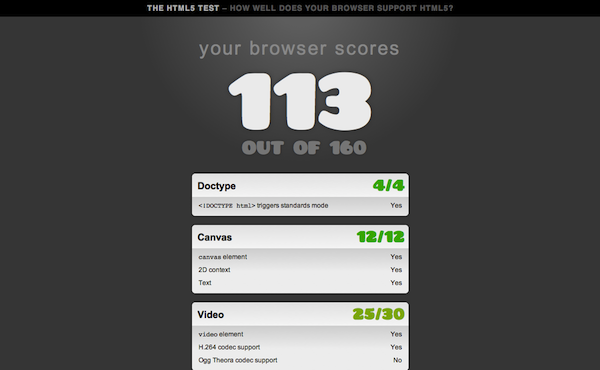 Safari HTML5 test results
Safari HTML5 test results